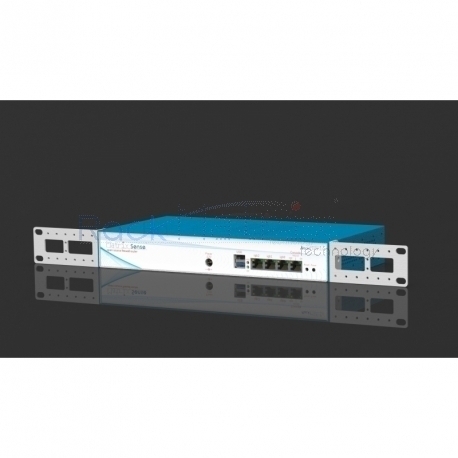No products
Prices are tax excluded

RackMatrix® S2 ready-to-use with Noah3 Intel E3845, 4 coeurs, 1.91 GHz, 3 ports GbE, 1 port SFP
RackMatrix® S2 ready-to-use with Noah3 Intel E3845, 4 cores, 1.91 GHz, 3 GbE ports
RMT-CASE-S2-BDL0007#E
New product
- Remove this product from my favorite's list.
- Add this product to my list of favorites.
More info
Ready-to-use RackMatrix® solution with a Noah3 E3845, 1.91 GHz quad core board in a S2 high-quality, modular, robust and rack-mountable.
The use cases are endless : router, virtualization appliance, multimedia solution, VPN gateway, WLAN access point, ect...
Details :
| motherboard | Noah 3 |
| CPU | Intel E3846 1.91GHz 4 cores |
| Memory | 4/8 GB DDR3-1333 DRAM |
| Storage | mSATA 16/30/32/64/120/128GB - SSD 500 GB or 1TB |
Rear I/O | RJ45 serial port 3 Intel Giga ports 1 USB 2.0 - 1 USB 3.0 |
Other Options Possible * | TCP232 |
| Power supply | External 12 V power supply |
| Warranty | 1 year |
| Dimension for 1U | 162*298*44 mm |
Enclosure features :
Ours enclosure are made of high quality aluminum, which ensures stability and durability. In addition, thanks to the Patented RackMatrix® Technology, ours enclosures are fully modular, self-cooling and adaptable for all possible applications.
Printing options :
- Product: The printout will correspond to the chosen software. If your choice is "no software" we will proceed with the generic print.
- Generic print: For products without software
- No printing.
- Custom printing: If you choose this option on a new product or for the first time, you will also need to purchase custom printing mastering for each panel to be done. For more details or to receive the templates, please contact us. If your master is already created, do not forget to remind us of the reference of it.
* Other Possible Options : Contact us on +33 1 84 18 10 18 or sales@rack-matrix.com for more information or customised products.


